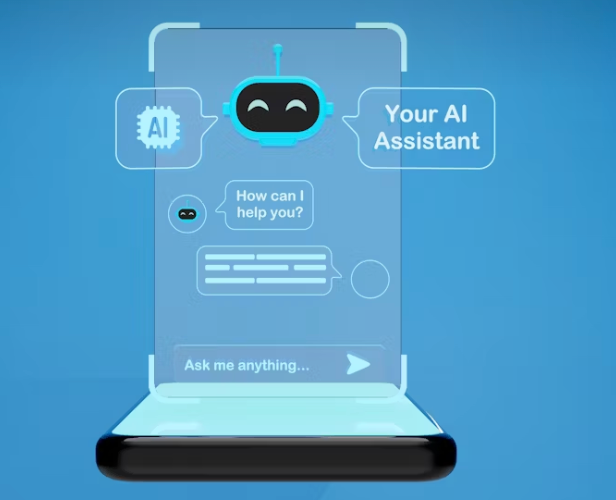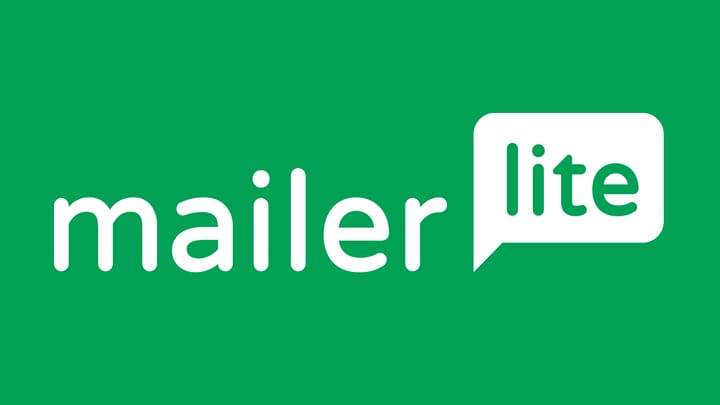Agentic AI is Coming to Your Inbox: What Email Infrastructure Needs to Survive 2025
These aren't chatbots that are just sitting there waiting for you to visit a website. They are independent programs that do things for users, and email is their favorite way to talk to people.

Your email system is going to get a lot busier, but not because people are suddenly sending more messages.
AI agents are already using email to make appointments, file support tickets, and handle subscriptions. These aren't chatbots that are just sitting there waiting for you to visit a website. They are independent programs that do things for users, and email is their favorite way to talk to people.
You need to know what's coming if you run an email infrastructure platform. Because AI agents will start flooding inboxes on a large scale, and email systems that weren't made for this new reality will break.
What Actually Is Agentic AI?
Forget the jargon for a second. An AI agent is software that can do tasks without someone holding its hand through every step.
Think about the difference between asking Siri to set a timer versus asking it to research restaurants, compare menus, check your calendar, make a reservation, and add it to your schedule. The first is a simple command. The second requires the AI to make decisions, use multiple tools, and complete a complex task from start to finish.
That's agentic AI. It plans, it reasons, and it acts.
These agents need to communicate with the outside world. They need to confirm bookings, receive notifications, handle customer service issues, and trigger workflows.
Email is still the universal inbox for all of this. Every business has email.
Every system can send and receive it. Unlike proprietary APIs that change or get shut down, email just works.
So AI agents are using email the same way humans do, except they're doing it thousands of times faster and never sleep.
Why This Matters for Email Infrastructure
Right now, most email systems are built with human behavior in mind. Humans send emails at certain times of day. They make typos. They get distracted. They send in bursts and then go quiet.
AI agents don't work like that.
They send perfectly formatted emails at any hour. They respond instantly. They can generate thousands of legitimate emails in the time it takes you to finish your coffee. And they do it all without the natural rhythm and randomness that human senders have.
This creates problems that current email infrastructure wasn't designed to handle.
The Volume Problem
An AI agent in charge of a small company's calendars could send out hundreds of emails every day. Now multiply that by the number of businesses that use these tools. The amount of real email traffic is about to go through the roof.
Your infrastructure needs to be able to handle this volume without breaking. This isn't spam we're talking about. These messages are real and necessary. But if your system thinks that volume means spam, you'll start blocking or slowing down real AI-generated emails.
The Pattern Recognition Problem
Spam filters and security systems look for patterns. When someone sends something in a strange way, it usually means something bad. But AI agents make new patterns that look suspicious even when they are perfectly fine.
They send at strange times. They use the same words in all of their messages because that makes them easier to understand. They respond faster than any person could. They could send dozens of emails to different people in just a few seconds.
All of this sets off alarms in traditional email security systems. The problem is that it can be hard to tell the difference between a spam bot and a helpful AI assistant when they act the same way on the surface.
The Authentication Problem
Email authentication exists to prove that messages actually come from who they claim to come from. SPF, DKIM, and DMARC are the standards that make this work.
But when AI agents send on behalf of users, the authentication gets complicated. Is the email coming from the user's domain? The AI platform's domain? Some third-party service? Each setup has different authentication implications.
If authentication is configured wrong, legitimate AI emails get rejected or land in spam. If it's too loose, you open the door to impersonation and abuse.
The Deliverability Problem
Email reputation is everything. Send too much too fast, and you get throttled or blocked. Get marked as spam too often, and your domain gets blacklisted.
AI agents can accidentally torch your sender reputation overnight. They don't understand that sending 10,000 cold outreach emails in an hour is a bad idea. They just see a task and execute it.
Email infrastructure needs guardrails to protect sender reputation while still allowing legitimate high-volume AI sending.

What Needs to Change
Email infrastructure platforms can't just hope this AI agent wave passes by. It won't. Here's what needs to happen for systems like Maileroo to stay relevant and reliable.
Smarter Rate Limiting
Rate limits that are used in the past are not very precise. If you send more than X emails an hour, your speed is limited. Easy.
But AI agents need to be more specific. To set up a meeting, a real AI scheduling assistant might need to send 50 emails in five minutes. That isn't spam. That's just software that works well.
Context-aware rate limiting is the answer.
Don't just count the emails; look at what they're doing. Are they answers to messages that come in? Are they sent to different people? Are they part of workflows that are known to be real?
You need rate limits that can tell the difference between a helpful AI agent and an attack, even when the two look the same.
Better Authentication Standards
Current email authentication works, but it wasn't designed for AI agents sending on behalf of humans. We need clearer standards for this use case.
Email platforms should support easy delegation. [email protected] should be able to cryptographically delegate sending authority to an AI service. The authentication should make it crystal clear that while the AI is sending the email, it's doing so with the user's explicit permission.
This prevents impersonation while keeping the authentication chain intact and auditable.
AI-Aware Spam Filtering
Spam filters need to evolve beyond simple pattern matching. They need to understand that AI agents behave differently than humans or spam bots.
This means looking at the intent and content of emails, not just the metadata. Is the email accomplishing a legitimate task? Is it part of a real conversation? Does it provide value to the recipient?
Machine learning models can help here, but they need training data that includes AI agent behavior. Otherwise, they'll keep flagging legitimate AI emails as suspicious simply because they don't match historical human patterns.
Transparent AI Indicators
People should know when they're interacting with an AI agent via email. Not because AI is bad, but because transparency matters.
Email infrastructure could support headers or metadata that clearly indicate when a message is AI-generated. This lets recipients and their email systems make informed decisions about how to handle these messages.
Some people might want to filter AI emails to a separate folder. Others might want to prioritize them. The key is giving everyone the information to choose.
Infrastructure Monitoring Built for AI Traffic
Traditional email monitoring watches for human-scale problems. A sudden spike in bounce rates. A drop in open rates. An increase in spam complaints.
But AI agent traffic creates different patterns. You need monitoring that understands these patterns and can spot real problems without freaking out over normal AI behavior.
This means tracking metrics like agent response times, task completion rates, and authentication success for AI-generated emails separately from human-generated ones.
The Risks of Doing Nothing
If email infrastructure platforms ignore this shift, they'll face serious problems.
Mass Deliverability Failures: Legitimate businesses using AI agents will find their emails constantly blocked or spammed. They'll blame the infrastructure provider and leave for competitors who figured this out.
Security Gaps: Trying to fit AI agent behavior into human-shaped security rules creates blind spots. Real threats will slip through while legitimate tools get blocked.
Reputation Damage: When your platform can't reliably deliver AI-generated emails, or when it can't protect against AI-powered attacks, your reputation tanks. Email infrastructure lives and dies on reliability and trust.
Lost Market Position: The platforms that solve AI agent email first will become the default choice for businesses adopting these tools. Everyone else will be playing catch-up.
What You Should Do Now
You don't need to rebuild everything overnight, but you do need a plan.
- Start collecting data on AI agent behavior in your network. You can't optimize for something you don't measure. Identify which emails are AI-generated, track their patterns, and understand how they differ from human emails.
- Build relationships with major AI platforms. Talk to the companies building these agents. Understand their needs. Create certified integrations that handle authentication and rate limiting intelligently.
- Test your current systems against AI agent scenarios. Simulate what happens when a customer starts using AI agents heavily. Where do your systems break? What triggers false positives? Fix those weak points before your customers find them.
- Educate your customers. Most businesses adopting AI agents don't understand email infrastructure. They'll blame you when things break. Get ahead of this by helping them configure AI tools properly and setting realistic expectations.
- Invest in adaptive security. Your spam and security filters need to learn what legitimate AI agent behavior looks like. This is a machine learning problem, not a rule-based one. Feed your systems real AI agent data and let them adapt.
The Bigger Picture
It's not just about email. It's about whether your infrastructure can change as quickly as the technology that uses it.
The first wave is AI agents. They'll use all forms of communication after email. Text messages, push notifications, and messaging apps. The platforms that can support AI agents without hurting their main service will be the most successful in their markets.
This is both a threat and an opportunity for all email infrastructure companies. A threat because if you don't pay attention to it, you'll become useless. If you get it right, you'll be the clear choice for the next generation of communication tools.
Companies that use AI agents aren't going to go away. They're getting bigger. They need email systems that work with their tools, not against them. They need platforms that get this new reality and make things for it.
Final Thoughts
Email infrastructure has evolved before. It survived spam. It survived mobile. It survived social media trying to replace it.
It'll survive AI agents too, but only if it adapts.
The platforms that treat AI agent traffic as an edge case or a problem to be contained will struggle. The ones that embrace it as the new normal and that build systems designed for both human and AI senders will thrive.
Agentic AI isn't coming to your inbox. It's already here. The question isn't whether your infrastructure needs to change. It's whether you'll change it before your customers notice it's broken.
Start planning now. Because in 2025, email infrastructure that can't handle AI agents won't be infrastructure worth using.



